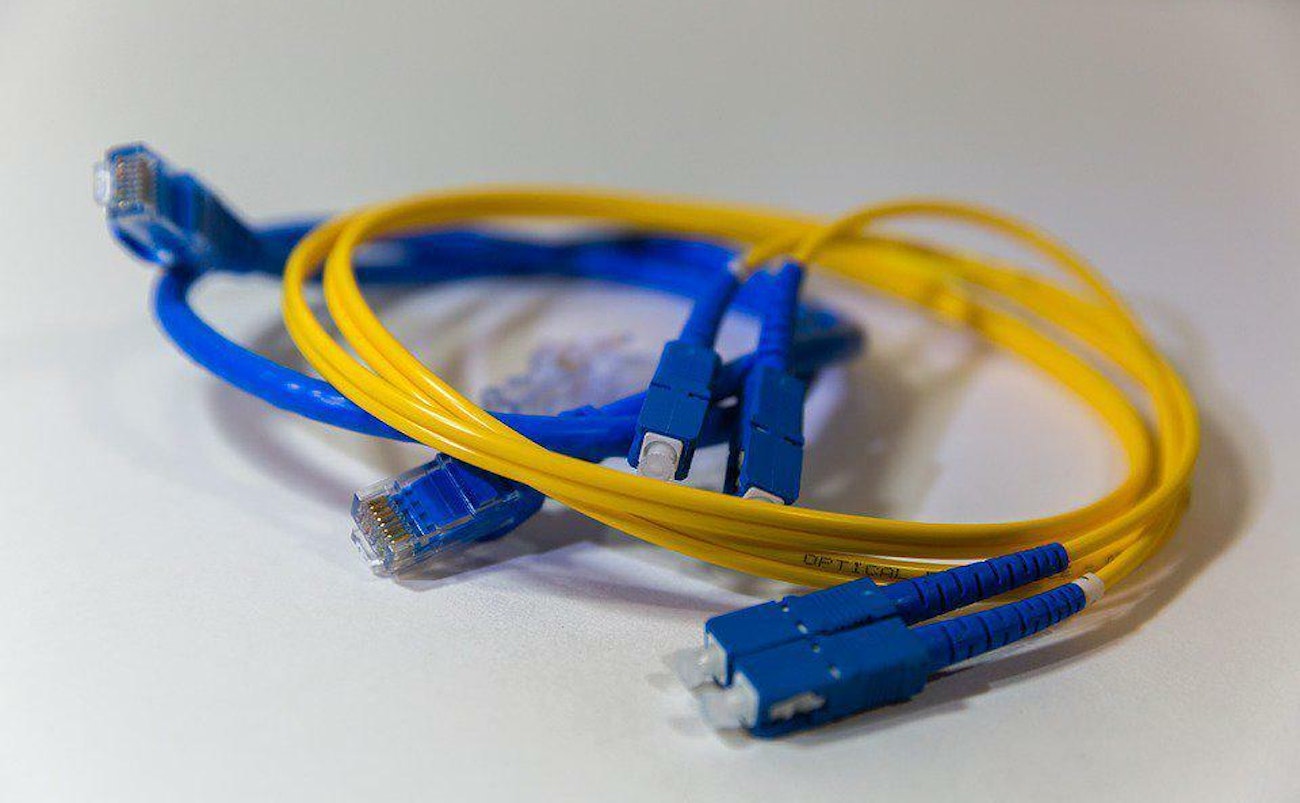The Differences Between Fibre and Wireless Leased Lines, and How to Choose One for Your Business

Your business needs an internet connection. There is a choice between a wireless or a fibre leased line. But what exactly are they? How will they benefit your company? And how do you choose one over the other?
Fibre and wireless are two ways of delivering the same thing: a high-speed internet connection. The installation methods may differ but they share the same benefits. These include dedicated bandwidth that is not affected by other internet users outside of your business, flexible options and, as we just said, high speeds.
We will be covering what makes a wireless leased line, what makes a fibre leased line and what are the similarities and differences between them. Then we will help you to choose the one that can provide you with the most reliable and cost-effective business internet connection.
Let’s begin with fibre.
What is Fibre?
A fibre leased line is also known as fibre to the premises (FTTP). A fibre optic cable connects your office to your internet service provider’s (ISP) supply point via an underground cable. The fibre optic cables themselves are about the size of human hair and reflect light, which makes for a fast internet connection.
For fibre to be installed, you would contact an ISP who would in turn check which fibre suppliers are in the local area. The ISP then asks this supplier for the cables to get your office connected to the internet. Roads are dug up so your cable can be installed to your premises. If you wanted something about your connection changed, this may require additional external works.
Read more: leased line comparison - what you need to know
With fibre covered, let’s look at wireless.
What is Wireless?
Wireless leased lines use rooftop antenna to provide your building with an internet connection.
Instead of reaching out to the local internet supplier and asking them to provide a cable, your ISP installs the antenna directly. They do this by attaching it to the roof of your premises.
After it has been fitted, your antenna is lined up with others in the area so a point-to-point internet connection can be directed to your business. This is also known as ensuring your antenna is within the line of sight (LOS) of the connection route. Your ISP will make changes to your connection by visiting your premises and replacing your antenna.
Now that we have explored what is meant by fibre and wireless, it is time to move onto the similarities and differences between them.
The Similarities Between Fibre and Wireless
The methods of installing fibre and wireless may be different, but the benefits to your business are the same. No matter which one you select, you will always end up with:
- Superfast speeds
- Uncontended bandwidth
- Low latency
- Scalability
- Symmetrical uploads and downloads
What does all this mean? Let’s look at each benefit in more detail.
Superfast speeds
Fibre and wireless can provide you with speeds ranging anywhere from 100 megabits per second (Mbps) to 10 gigabits per second (Gbps). How fast is that? In a word, very. You could download a 2-hour Hollywood blockbuster in a matter of seconds. Well, maybe not in the office. But you get the idea.
Uncontended bandwidth
Fibre leased lines and wireless leased lines use uncontended bandwidth. What this means is that you are not sharing the line with anyone else, so your internet speed will remain the same at any time of the day. So you can get on with the things you need to do without delay.
Low latency
Latency is the term used to describe the time it takes for a web page to respond after you have clicked on it. The higher the latency, the longer it takes to respond. The lower, the less time it takes. Wireless and fibre have low latency as standard.
Scalability
As your needs change, you might consider getting more or less bandwidth for your internet. Many ISPs offer scalability as part of their fibre and wireless packages. So notifying them of any changes you want to make is easy.
Symmetrical uploads and downloads
Ever noticed how sometimes, it takes longer to upload a file than it does to download it? That doesn’t happen with fibre and wireless leased lines. You can upload and download files at equal speeds, or symmetrically.
The Differences Between Fibre and Wireless
Installation times
Wireless leased lines can be installed in as little as 7 working days. This is because all it takes to get connected is having an antenna attached to your roof. Assuming you are in the LOS, which is something your ISP will tell you before the installation goes ahead, there is nothing else to it. Upgrades would take around the same amount of time.
Fibre can take anywhere between 30 and 90 days to install. Digging up roads and laying down the cable is a long and disruptive process on its own. But before that can happen, your ISP may need to get permission from the local authority. For upgrades, this process may have to be repeated.
Costs
Generally speaking, it is cheaper to install a wireless leased line than a fibre one. Provided the LOS is there, the only costs you will incur for wireless are the quick installation and your monthly bill afterwards.
Everything that goes into a fibre installation is expensive, from getting sign-off to laying down the cables. And extra costs can crop up later in the form of excess construction charges, if the supplier thinks your cable has been laid a long way away from your building. These can range anywhere from £2,500 to £100,000.
Despite this, there are times when wireless can become more of a financial burden than it needs to be. If there is no LOS in your area and you want it, you will have to pay to get this technology installed. Chances are you will not be able to afford this on your own and will end up needing a community sign-up. Which could take weeks or even months to secure. In this scenario, fibre may end up being the easier and cheaper choice.
Another time this can happen is if you move into a new building where there is already fibre. All your ISP has to do is connect your line to the rest of the network. However, it is not always that simple. If you want to change ISP, you may find the current one making it a difficult and expensive process for you. The fibre may be linked up to the wrong part of the network entirely and costly to get redirected.
Capacity
Fibre can offer you up to hundreds of gigabytes per cable, whereas each wireless antenna is limited to around 20Gbps. While it is possible to get more capacity on wireless by fitting more antennas, you will find yourself paying each time you need an additional one. In this situation, it is easier to go with fibre and get more capacity with less hardware.
After all that, you may be starting to think that we recommend wireless over fibre. But there are some occasions where fibre is the better choice.
Why Choose Fibre?
If your business is in an area where there is no LOS for an antenna, or in a rural location, fibre is the easier option. Not that getting LOS is impossible in these scenarios, but you risk spending a lot of time trying to get community support for purchasing the necessary technology.
We do, however, think wireless makes for a great alternative to fibre.
Why Choose Wireless?
If you are in a LOS, a wireless leased line is the better way to go. It will be cheaper and faster to set up and easier to upgrade. All of this work can be carried out within the space of a week.
There are times when you can combine your wireless with a fibre leased line, for maximum uptime and backup.
Combining Fibre and Wireless
Here is one such situation in which you would consider this. You are about to move into a new office. Before that happens, you get wireless installed a week ahead of time, so the connection is there and ready to use when you move in. The fibre line can be installed later. This gives you a working internet connection right away, and a backup in the weeks to come.
Read more: before moving office, plan your internet connection
Location, Timing and Budget
Fibre and wireless use varying installation methods to provide your business with:
- Superfast speeds
- Uncontended bandwidth
- Low latency
- Scalability
Symmetrical uploads and downloads
When it comes to choosing one for your business, you have to consider the availability in your area, your budget and timing. In a LOS, wireless is the cheaper and faster option. When there is no LOS or in rural areas, fibre can offer you an easier and less costly connection. When both fibre and wireless are available to you, you can combine them for maximum uptime and backup.
For more advice on choosing between fibre and wireless, contact us for a leased line quote. We will show you which one can offer you a fast, reliable and cost-effective business leased line.





